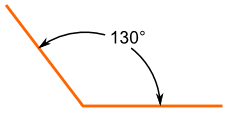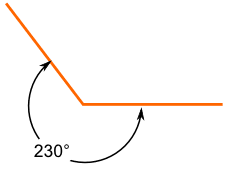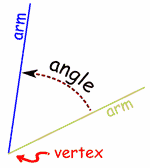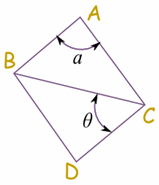Wednesday, June 30, 2010
SBI Clerk Exam Pattern
SBI Clerk Exam Pattern
SBI clerk Exam Questions Are 200.
Time for 200 questions Is 135 Minutes.
sbi paper pattern::
SBI clerk paper mainly consist of 5 parts.
1) Reasoning Ability
2) Quantitative Aptitude
3) General English
4) Computer knowledge/ marketing
5) General Awareness
Here, we dont have clerkical Knowledge section.
compare to OTHER clerk exams, Sbi exam is giving much time.
| Sbi clerical paper Topics | Marks | Qualifing Marks |
|---|---|---|
| Reasoning Ability | 40 | 16 |
| Quantitative Aptitude | 40 | 16 |
| General English | 40 | 16 |
| Computer knowledge/ marketing | 40 | 16 |
| General Awareness | 40 | 16 |
Top scorers are eligible for Interview process.
For Interview Round, 1:3 people Called for Interview(For Example, If 90 posts are there, 270 people call for Interview(90 Selected, 180 Rejected).
CORPORATION BANK CLERKS RECRUITMENT 2010
CORPORATION BANK RECRUITMENT 2010 FOR 1250 CLERK JOBS
Probation: 6 Months. Total emoluments for graduates at the start of the scale in Clerical Cadre will be Rs. 9,500/- (Approx.) (Including DA & HRA) (for metro). Other benefits include Conveyance, Medical Aid, LFC and Retirement benefits, as per the bank’s rules.
ON-LINE APPLICATIONS ARE INVITED FOR APPOINTMENT IN THE CLERICAL CADRE
| Opening date for On-Line Registration : 01.07.2010 |
| Closing date for On-Line Registration : 31.07.2010 (For All Applicants, including those from Far Flung Areas) |
| Call Letters to be downloaded from website of the Bank after : 24.08.2010 |
| Likely date of Examination : 12.09.2010 |
AGE LIMIT: Not below 18 years and not above 28 years as on 01.06.2010
EDUCATIONAL QUALIFICATION : (As on the Date of Application): Graduate in any discipline with 40% or more marks in aggregate from a recognized university or its equivalent qualification. SC/ST/XS/VH/HI/OH candidates must obtain 35% marks. Computer Literacy is essential for the post.APPLICATION FEE INCLUDING OUT OF POCKET EXPENSES (non-refundable):
For SC / ST / VH / HI / OH / Ex-Servicemen - Rs. 50/-
(towards out of pocket expenses only)
(towards out of pocket expenses only)
For All Others (including OBCs) - Rs. 200/-
NOTE: 1. Application fee including out of pocket expenses should be paid in cash at any of the Branches of Corporation Bank to A/c No. 0377/CA/01/000709.
2. Payment of application fees paid /or out of pocket expenses by DD/Cheques/ Money Order/Postal Order will not be accepted.
PROBATION AND APPROXIMATE TOTAL EMOLUMENTS :2. Payment of application fees paid /or out of pocket expenses by DD/Cheques/ Money Order/Postal Order will not be accepted.
Probation: 6 Months. Total emoluments for graduates at the start of the scale in Clerical Cadre will be Rs. 9,500/- (Approx.) (Including DA & HRA) (for metro). Other benefits include Conveyance, Medical Aid, LFC and Retirement benefits, as per the bank’s rules.
Names of Angles
Names of Angles
As the Angle Increases, the Name Changes
| Type of Angle | Description | |
|---|---|---|
| Acute Angle | an angle that is less than 90° | |
| Right Angle | an angle that is 90° exactly | |
| Obtuse Angle | an angle that is greater than 90° but less than 180° | |
| Straight Angle | an angle that is 180° exactly | |
| Reflex Angle | an angle that is greater than 180° |

Be Careful What You Measure
 |  |
This is an Obtuse Angle. | And this is a Reflex Angle. |
| But the lines are the same ... so when naming the angles make sure that you know which angle is being asked for! | |
 | Parts of an AngleThe corner point of an angle is called the vertexAnd the two straight sides are called arms The angle is the amount of turn between each arm. |
Labelling Angles
| There are two main ways to label angles: 1. by giving the angle a name, usually a lower-case letter like a or b, or sometimes a Greek letter like α (alpha) or θ (theta) 2. or by the three letters on the shape that define the angle, with the middle letter being where the angle actually is (its vertex). Example angle "a" is "BAC", and angle "θ" is "BCD" |  |
Tuesday, June 29, 2010
Battles and Wars Outside India
Battles and Wars Outside India
Battle of Marathon (490 B.C.)—This battle was fought between the Greeks and Persians in 490 B.C. A small Greek Army defeated much larger Persian force.
Battle of Hastings (1066 A.D.)—This war was fought between England and Normans in 1066 A.D. King Harold of England was defeated and England came under the Norman control.
‘Hundred Years’ War (1338-1453)—It was fought between France and England. The war was brought to an end by the sacrifice of Joan of Arc.
War between Henry VII and Richard (1455-85)—It was a civil war fought in 1455-85 between Henry VII and Richard (The Duke of York) both claiming the British throne on Henry VI’s death. Richard was defeated in this war.
Defeat of Spanish Armada (1588)—The British fleet defeated Spanish Armada. The British supremacy over the seas was established. Also, it led to renaissance in English life and literature.
Civil War in England (1642-49)—It was fought between the Parliament and Charles I of England.
War of Spanish Succession (1702)—It was fought between England and France in 1702. The latter were defeated.
Battle of Blenheim (1704)—England and Austria defeated the French and Bavarians.
Seven Years War (1756-63)—England and Prussia defeated Austria, France, Poland and Russia. It was caused by a revolutionary change in the diplomatic pattern.
American War of Independence (1776-83)—It was fought during 1776-1783. In this war, George Washington defeated the English forces and America became independent.
Battle of the Nile (1798)—A naval fight between British and French fleet in 1798. The British fleet commanded by Nelson was victorious.
Battle of Trafalgar (1805)—The British fleet under Nelson defeated the combined line of French and Spanish fleet.
Battle of Waterloo (1815)—The British under Duke of Wellington defeated Napolean. Napolean was captured and exiled to St. Helena where he died in 1821.
Crimean War (1854-56)—It was fought during 1854-56 between Russia and the combined forces of England, France and Turkey.
American Civil War (1861-65)—This was fought during 1861-65 between the Northern and Southern States of America.
Boer War (1889-1901)—This war was fought between British and Dutch forces in 1889-1901 in South Africa.
Sino Japanese War (1894-95)—Japan defeated China and occupied Formosa and Korea.
Russo-Japanese War (1904-05)—Also known as the Battle of the sea of Japan. The Japanese fleet defeated the Russian fleet. It led to the emergence of the wave of Asian resurgence.
World War I (1914-18)—The Allied Powers (Britain, France, U.S.A., Belgium) etc. defeated Germany and her associated powers.
World War II (1939-45)—The Allies (Britain, France, U.S.A. and Russia and Benelux countries etc. defeated the Axis Powers (Germany, Italy and Japan).
Battle of El-Alamein (1942)—The Allies Victory during the Second World War and retreat of Field Marshal General Rommel’s forces.
Korean War (1950-53)—It was fought between North and South Korea from 1950 to 1953 A.D.
4th Arab-Israel War (Oct. 1973)—An indecisive war led to Geneva Peace Conference on West Asia (Dec. 1973).
China-Vietnam War (Feb. 1979)—China invaded Vietnam and overran a large chunk of Vietnamese territory. It however, proclaimed ceasefire in the following month and withdrew its forces.
Iran-Iraq War (Oct. 1980-Aug. 1988)
Falkland War (1983)—It was fought between Britain and Argentina.
U.S.-Panama War (1989)—It was fought between United States and Panama.
Gulf War (Jan. 17, 1991-Feb. 26, 1991)—It was fought between multinational forces led by the U.S.A. and Iraq.
Gulf War-2 (March 20, 2003 to April 2003)—The US led coalition forces launched a full scale attack on Iraq on March 20, 2003. It made use of the latest and the fiercest weaponry to subdue the Iraqi forces. Baghdad fell on April 9, 10 and other cities followed suit. By April 20 the coalition armies were in full control of Iraq. It marked the downfall of President Saddam Hussein. The coalition forces however, found it difficult to face the resistance of Iraqi freedom fighters and, therefore, fixed June 30, 2004, as the date for handing over sovereignty to Iraq. However, political authority was transferred by the U.S. led coalition to Interim Iraqi government on June 28, 2004, i.e. two days ahead of the scheduled date. General Elections were held in Iraq on Jan. 30, 2005 to elect an Assembly which would frame a Constitution for Iraq. The elections returned the Shias in majority. This Assembly would complete the Constitution making process by August 15, 2005. This Constitution will be ratified by the people in a referendum by October 2005. The new Government would be elected under this very Constitution. Meanwhile new government was formed in Iraq on April 28, 2005 by the first democratically elected Prime Minister Ibrahim-el-Jaafari. The Parliament also accorded its approval to it the same day.
The Draft constituion prepared under the present arrangements was put to referendum on Oct. 15, 2005. Its enforcement was subject to its ratification by the people in the referendum. The result of the referendum was announced on Oct. 25, 2005. The Iraqi people gave their overwhelming support to the new Constitution in the referendum. A new government was formed in Iraq under this Constitution with Ibrahim al-Jaafari taking over on Feb. 12, 2006 as the Prime Minister. Later, he was replaced by Nuri-al-Maliki. Jalal Talabani was re-elected as President of Iraq. The country is passing through orgies of violence and normalcy seems yet a distant dream.
Battle of Panipat
Battles and Wars in India
Battles and Wars in India
Battle of Hydaspes—In 326 B.C. when Alexander, the great had to turn back from Hydaspes (Beas) when his troops refused to march into India against the Nanda Empire.
Battle of Kalinga—It was fought in 361 B.C. between Ashoka, the great and the king of Kalinga. The war resulted in considerable loss of life and brought misery and suffering to the people. Its impression on Ashoka was so great that he not only turned a Buddhist, but renounced war and violence.
1st Battle of Tarain (1191 A.D.)—Prithvi Raj defeated Mohd. Gauri.
2nd Battle of Tarain (1192 A.D.)—Mohd. Gauri defeated Prithvi Raj and paved the way for Muslim rule in India.
First Battle of Panipat (1526)—Babur defeated Ibrahim Lodi. This laid the foundation of Mughal rule in India.
Second Battle of Panipat (1556)—Akbar defeated Hemu. It ended the Afgan Rule and the way was cleared for Mughal rule.
Battle of Talikota (1565)—The united alliance of Bijapur, Bidar, Ahmednagar and Golkunda under Hussain Nizam Shah defeated Ram Raja of Vijaynagar. It sealed the fate of the Hindu Kingdom of Vijaynagar.
Battle of Haldighati (1576)—Akbar defeated Rana Pratap. The latter had to take refuge in remote fortresses.
Battle of Plassey (1757)—The British under Lord Clive defeated Sirajuddaulah. It laid foundation of the British Rule in India.
Third Battle of Panipat (1761)—Ahmed Shah Abdali defeated the Marahattas. The Marahatta power suffered an irreparable loss.
Battle of Buxer (1764)—The British under Sir Hector Munro defeated the Muslim army under three Mohammadan leaders : Mir Qasim, Shuja-ud-daulha and Shah Alam II. The battle made the British Supreme in India.
The First Sikh War (1845)—The Sikh Army crossed Sutlej in 1845 at which the East India Company declared war. British occupied Lahore and forced the Sikhs to accept humiliating terms of peace.
The Second Sikh War (1849)—A drawn battle was fought between the English and the Sikhs at Chelianwala in which the English appeared to have suffered heavy losses.
Indo-Pak War (1965)—An indecisive war between India and Pakistan. It led to ‘Taskent Pact’ between the two countries.
Indo-Pak War (1971)—Indian forces in joint command with Bangladesh Army accepted the surrender of the Pak Army in Bangladesh. War in the western sector came to an end as a result of cease-fire on Dec. 17. Bangladesh was liberated.
Battle of Kalinga—It was fought in 361 B.C. between Ashoka, the great and the king of Kalinga. The war resulted in considerable loss of life and brought misery and suffering to the people. Its impression on Ashoka was so great that he not only turned a Buddhist, but renounced war and violence.
1st Battle of Tarain (1191 A.D.)—Prithvi Raj defeated Mohd. Gauri.
2nd Battle of Tarain (1192 A.D.)—Mohd. Gauri defeated Prithvi Raj and paved the way for Muslim rule in India.
First Battle of Panipat (1526)—Babur defeated Ibrahim Lodi. This laid the foundation of Mughal rule in India.
Second Battle of Panipat (1556)—Akbar defeated Hemu. It ended the Afgan Rule and the way was cleared for Mughal rule.
Battle of Talikota (1565)—The united alliance of Bijapur, Bidar, Ahmednagar and Golkunda under Hussain Nizam Shah defeated Ram Raja of Vijaynagar. It sealed the fate of the Hindu Kingdom of Vijaynagar.
Battle of Haldighati (1576)—Akbar defeated Rana Pratap. The latter had to take refuge in remote fortresses.
Battle of Plassey (1757)—The British under Lord Clive defeated Sirajuddaulah. It laid foundation of the British Rule in India.
Third Battle of Panipat (1761)—Ahmed Shah Abdali defeated the Marahattas. The Marahatta power suffered an irreparable loss.
Battle of Buxer (1764)—The British under Sir Hector Munro defeated the Muslim army under three Mohammadan leaders : Mir Qasim, Shuja-ud-daulha and Shah Alam II. The battle made the British Supreme in India.
The First Sikh War (1845)—The Sikh Army crossed Sutlej in 1845 at which the East India Company declared war. British occupied Lahore and forced the Sikhs to accept humiliating terms of peace.
The Second Sikh War (1849)—A drawn battle was fought between the English and the Sikhs at Chelianwala in which the English appeared to have suffered heavy losses.
Indo-Pak War (1965)—An indecisive war between India and Pakistan. It led to ‘Taskent Pact’ between the two countries.
Indo-Pak War (1971)—Indian forces in joint command with Bangladesh Army accepted the surrender of the Pak Army in Bangladesh. War in the western sector came to an end as a result of cease-fire on Dec. 17. Bangladesh was liberated.
Monday, June 28, 2010
CIVILS GENERAL STUDIES REFERENCE BOOKS
| S.No. | Name | Author / Publisher |
|---|---|---|
| 1 | An Introduction to the Constitution of India | D.D.Basu |
| 2 | Perspectives on Indian Constitution | Edited by Subash Kashyap |
| 3 | Biology for VIII-X Std | NCERT |
| 4 | Physics for VIII-X Std | NCERT |
| 5 | Chemistry for VIII-X Std | NCERT |
| 6 | Anatomy & Physiology for Nurses Courses | Evelyn Pearce |
| 7 | Know your body | Reader’s Digest |
| 8 | An Evolution of Indian Economy | I.C.Dhingra (Sultan Chand & Co) |
| 9 | Indian Economy | Dutt & Sundaram |
| 10 | Economic Survey of India | Government of India |
| 11 | General Principles of World Geography | Charles Farro |
| 12 | Monsoon Asia | Charles Farro |
| 13 | Physical Geography of India for VII – XII Std | NCERT |
| 14 | Any Good School Atlas | |
| 15 | Ancient India for VII-XII Std | NCERT |
| 16 | Medieval India for VII-XII Std | NCERT |
| 17 | Modern India | Bipin Chandra |
| 18 | History of Modern India | A.C.Banerjee |
| 19 | The Hindu & Times of India | Newspapers |
| 20 | Frontline and Political & Economic weekly | Periodicals |
| 21 | Yojana & World Focus | Periodicals |
| 22 | Statistical Methods | S.C.Gupta |
IAS Pre REFERENCE BOOKS
Mathematics
|
IAS Main REFERENCE BOOKS
Mathematics
|
GATE REFERENCE BOOKS
Mathematics
| S.No | Subject | BookName | AuthorName | Publisher |
|---|---|---|---|---|
| 1 | Calculus of Variation | | A.S.Gupta | P.H. |
| 2 | Numerical Analysis | | Jain, Iyengar Jain | New Age Publications |
| | S.S. Sastry | Prentice Hall of India | ||
| 3 | Integral Equations | | Shanti Narayan | |
| 4 | Statistics | | S.C.Gupta and V.K.Kapoor | S.Chand |
| 5 | Complex Analysis | | V. Karunakaran | Narosa |
| | L.Volkovysky Glunts and I.Aramanovich | MIR publishers and Moskow | ||
| | H.S.Kasana | PHI | ||
| | John B. conway | Springer | ||
| | Ruel V. Chuchchill | International | ||
| | S.Ponnusamy | Narosa | ||
| | Murray R. Spiegel | Mcgraw-Hill | ||
| | Anant R. Shastri | Macmillan | ||
| 6 | Linear Algebra | | Roger A. Horn and Charles R. Jhonson | |
| | A.R.Vashistha and A.K.Vashistha | Krishna Publication | ||
| | Stephen H. Friedberg,Arnold J. INsel and Lawrence E. Spence | PHI | ||
| | David W. Lewis | Allied publishers Ltd. | ||
| | Mohd. zubair Khan | Anamaya | ||
| | Thomas Banchoof and John Wermer | Springer | ||
| | K.M. Abadir and Jan R. Magnus | |||
| 7 | Modern Algebra | | Surjeet Singh and Quzi Zameeruddin | Vikas Publishing house Pvt. Ltd. |
| | Ramji Lal | Sahil publication | ||
| | Vijay K. Khanna and S.K. Bhambari | Vikas | ||
| | I.S.Luthar and I.B.S.Passi | Narosa | ||
| | I.S. Luthar and I.B.S. Passi | Narosa | ||
| | F.J. Budden | |||
| | John A. Beachy | |||
| | D.A.R. Wallace | Springer | ||
| | Michael Artin | Pearson | ||
| | Spectrum P.K.Sharma, Santokh Singh Minhas | Sharma Publication | ||
| | I.N. Herstein | John Willey | ||
| | D.S.Malik, John N. Mordeson and M.K.sen | McGraw hill | ||
| | Joseph A. Gallian | Narosa | ||
| 8 | Differential equation | | J.N.Sharma and Kehar Singh | Narosa |
| | Martin Braun | Narosa | ||
| | Garrett Birkhoff | John Wiley & sons | ||
| | Ian N. Sneddon | Mcgraw-Hill | ||
| | M.D. Raisinghania | S.Chand | ||
| 9 | Real Analysis | | Terence Tao | Hindustan Book Agency |
| | N.P. Bali | Laxmi Publications (P) LTD | ||
| | S.L.Gupta and N.R.Gupta | Pearson | ||
| | S.C.Malik, Savita Arora | New Age International | ||
| | George Padrick | Springer | ||
| | Robert G. Bertle and Donald R. Sherbert | Willey | ||
| | Dr. H . Kanwar | Mohindra capitals | ||
| | D. Somasundaram and B. choudhary | Narosa | ||
| | Walter Ruddin | McGraw Hill | ||
| | Paulo Ney De Souza | Springer | ||
| 10 | Operations Research | | P.K.Gupta, Man Mohan | S.Chand |
| | Kanti Swaruop | S.Chand | ||
| 11 | MEASURE THEORY | | P.K Jain & V.K Gupta | Willy Western New age International |
| 12 | Topology | | R.S.Aggarwal | |
| | Dr. P.K.Sharma | |||
| | K.D.Joshi | New Age International |
NET REFERENCE BOOKS
General Science
| ||||||||||||||||||||||||||||||||||||||||||||||||||||||||||||||||||||||||||||||||||||||||||||||||||||||||||||||||||||||||||||||||||||||||||||||||||||||||||||||||||||||||||||||||||||||||||||||
Mathematics
|
Subscribe to:
Comments (Atom)


